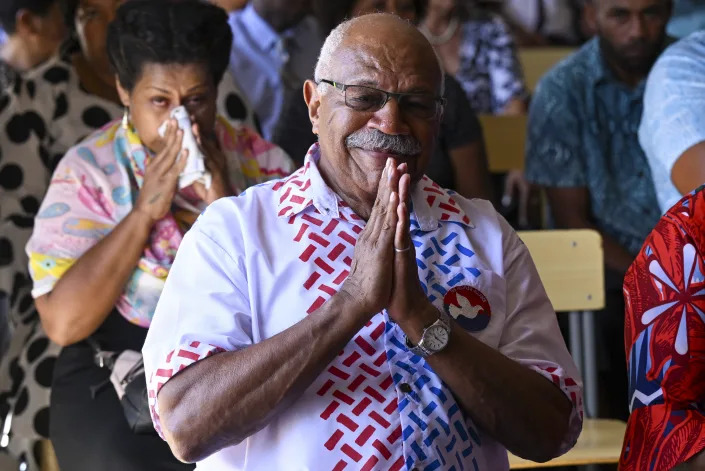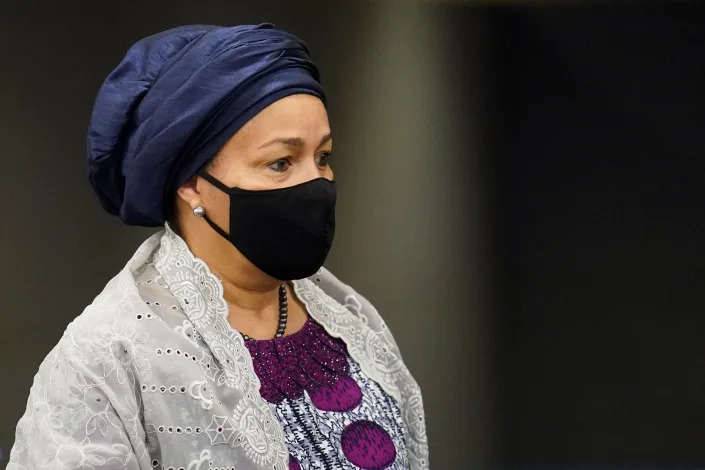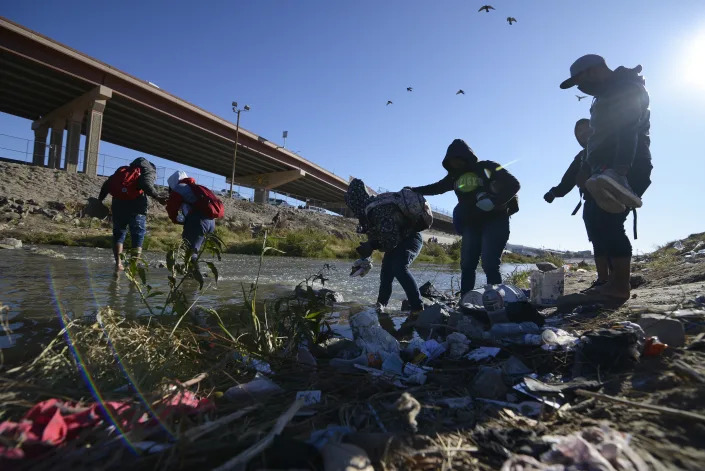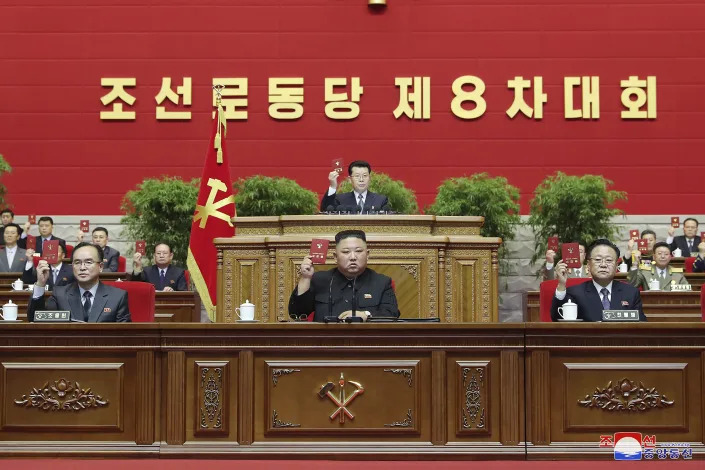
People's Alliance Party leader Sitiveni Rabuka gestures during a church service at the Fijian Teachers Association Hall in Suva, Fiji, Sunday, Dec. 18, 2022. Fijian police on Thursday, Dec. 22, 2022 said they were calling in the military to help maintain security following a close election last week that is now being disputed.
NICK PERRY
Wed, December 21, 2022
WELLINGTON, New Zealand (AP) — Fijian police on Thursday said they were calling in the military to help maintain security following a close election last week that is now being disputed.
It was an alarming development in a Pacific nation where democracy remains fragile and there have been four military coups in the past 35 years. The two main contenders for prime minister this year were former coup leaders themselves.
Police Commissioner Brig. Gen. Sitiveni Qiliho said in a statement that after police and military leaders met with Prime Minister Frank Bainimarama they collectively decided to call in army and navy personnel to assist.
The commissioner said there had been threats made against minority groups who were “now living in fear following recent political developments.”
Reporters in the capital, Suva, said there were no immediate signs of any military presence on city streets.
The military move came after Bainimarama’s Fiji First party refused to concede the election, despite rival Sitiveni Rabuka's party and two other parties announcing they had the numbers to form a majority coalition and would serve as the next government.
Fiji First Gen. Sec. Aiyaz Sayed-Khaiyum told media Wednesday that under the nation's constitution, Bainimarama would remain prime minister until lawmakers returned to Parliament within two weeks to vote on the next leader.
Sayed-Khaiyum questioned the validity of the internal voting which had led to one of the parties joining Rabuka's coalition. And he lashed out at Rabuka, accusing him of sowing division in Fiji.
“The entire rationale of this man has been to divide Fiji to gain political supremacy,” Sayed-Khaiyum said. “And we can see that simmering through again. In fact it's not simmering, it's boiling.”
A day earlier, Rabuka and two other party leaders announced they were forming a coalition with a total of 29 seats against Fiji First's 26 and would form the next government.
“A government we hope that will bring the change that people had been calling out for over the last few years,” Rabuka said at a news conference. “It’s going to be an onerous task. It will not be easy, and it was never easy to try and dislodge an incumbent government. We have done that, collectively."
Rabuka's announcement prompted New Zealand Foreign Minister Nanaia Mahuta to send her congratulations on Twitter, saying New Zealand “looks forward to working together to continue strengthening our warm relationship."
But New Zealand Prime Minister Jacinda Ardern took a more cautious approach, saying she was waiting until the dust settled.
Bainimarama has been in power for 16 years. He led a 2006 military coup and later refashioned himself as a democratic leader by introducing a new constitution and winning elections in 2014 and 2018.
Rabuka, meanwhile, led Fiji’s first military takeover in 1987 and later served seven years as an elected prime minister in the 1990s.
Bainimarama and Rabuka were initially deadlocked after the election. Rabuka’s People’s Alliance Party won 21 seats and the affiliated National Federation Party won five seats, while Bainimarama’s Fiji First party secured 26 seats.
That left the Social Democratic Liberal Party, which won three seats, holding the balance of power. The party decided Tuesday in a close 16-14 internal vote to go with Rabuka — a vote that Fiji First is now questioning.
















